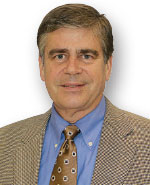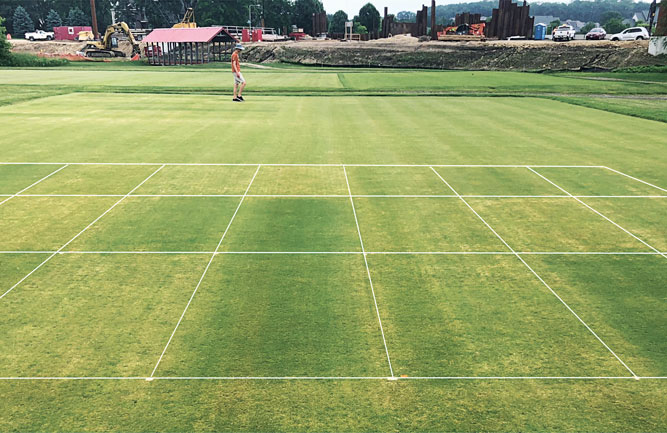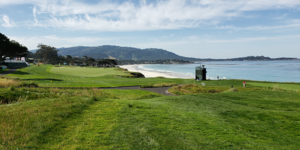Spring colors: Turfgrass differences in the spring
Of all the seasons, spring is where we see the greatest differences in growth and color among the turfgrass species caused by weather. Greens often appear as a patchwork of colors expressed by different turf species and individual populations of the same species.
Annual bluegrass (Poa annua), with its vibrant light-green to green color, is in stark contrast to the semi-dormant to bluish-colored creeping bentgrass. The vibrant color of annual bluegrass occurs in part because it initiates growth sooner than creeping bentgrass. Most shocking is where all these brilliant green patches came from. They sure were not obvious late last summer or through the fall.
Annual bluegrass is a winter annual. Seed germination begins mid-fall, which often is visually difficult to detect. Greens in the fall may appear relatively clean (low annual bluegrass populations), but once greens emerge from winter something happens — a breakout of a putting green’s version of acne: annual bluegrass patches.
The common reason given for this is that annual bluegrass colonizes ball marks. However, ball marks are not evident on many of these greens. Researchers at Auburn University, in addition to looking at optimum temperatures for annual bluegrass germination (the annual type), investigated the impact of photoperiod. When analyzed across temperature treatments, they reported that annual bluegrass could germinate in complete darkness at a level relatively close to that observed under light. Although most weeds that produce small seeds need light to germinate, one weed – Poa annua – apparently does not. Although not the only factor (and disturbance is still important) the ability to germinate under a dense turf canopy is a competitive advantage of annual bluegrass.
The good news is that the appearance of “overnight” annual bluegrass in the spring usually leads to a quick disappearance in the summer. Although summer temperatures are stressful to creeping bentgrass, the stress is not as severe in comparison to annual bluegrass. Creeping bentgrass often outcompetes or crowds out annual bluegrass. It’s fascinating that annual bluegrass is extremely competitive against creeping bentgrass under spring temperatures but that the roles reverse under summer temperatures.
Spring purpling of creeping bentgrass is caused by anthocyanin production. Anthocyanin production, expressed in the form of bluish-to-purple leaf color, is a sign of stress. The expression of anthocyanin is driven by spring weather conditions, typically cool day and night temperatures, but always associated with increasing day length and increasing light intensities. Anthocyanins are produced to help protect newer leaf tissue from these changing environmental conditions.
Preliminary greenhouse studies here at The Ohio State University by David Gardner, Ph.D., and graduate student Dominic Petrella found that creeping bentgrass cultivars vary in the speed in which they produce anthocyanins in response to a stress. So if anthocyanin production seems excessive during spring, especially if pesticides also have been applied, you could be dealing with one cultivar that responds at a faster rate than another. Once the stress dissipates and the plant begins to grow, the normal green color will appear.
The combination of off-color or purple creeping bentgrass and much slower growth compared to annual bluegrass often drives superintendents to attempt to stimulate color and growth through elevated nitrogen applications. This is a mistake. Creeping bentgrass will start growing when it feels like it. Don’t push it. Excessive nitrogen in spring will lead to problems later in the year.
Although a natural cycle, the difficulty with spring color is that golfers want perfectly smooth green putting greens on the first day that temperatures rise into the mid-60s. Golfers don’t want to wait, and they sure don’t want to hear that the best thing we can do is nothing, just let warmer temperatures take care of spring colors. However, that is exactly what we should do.












